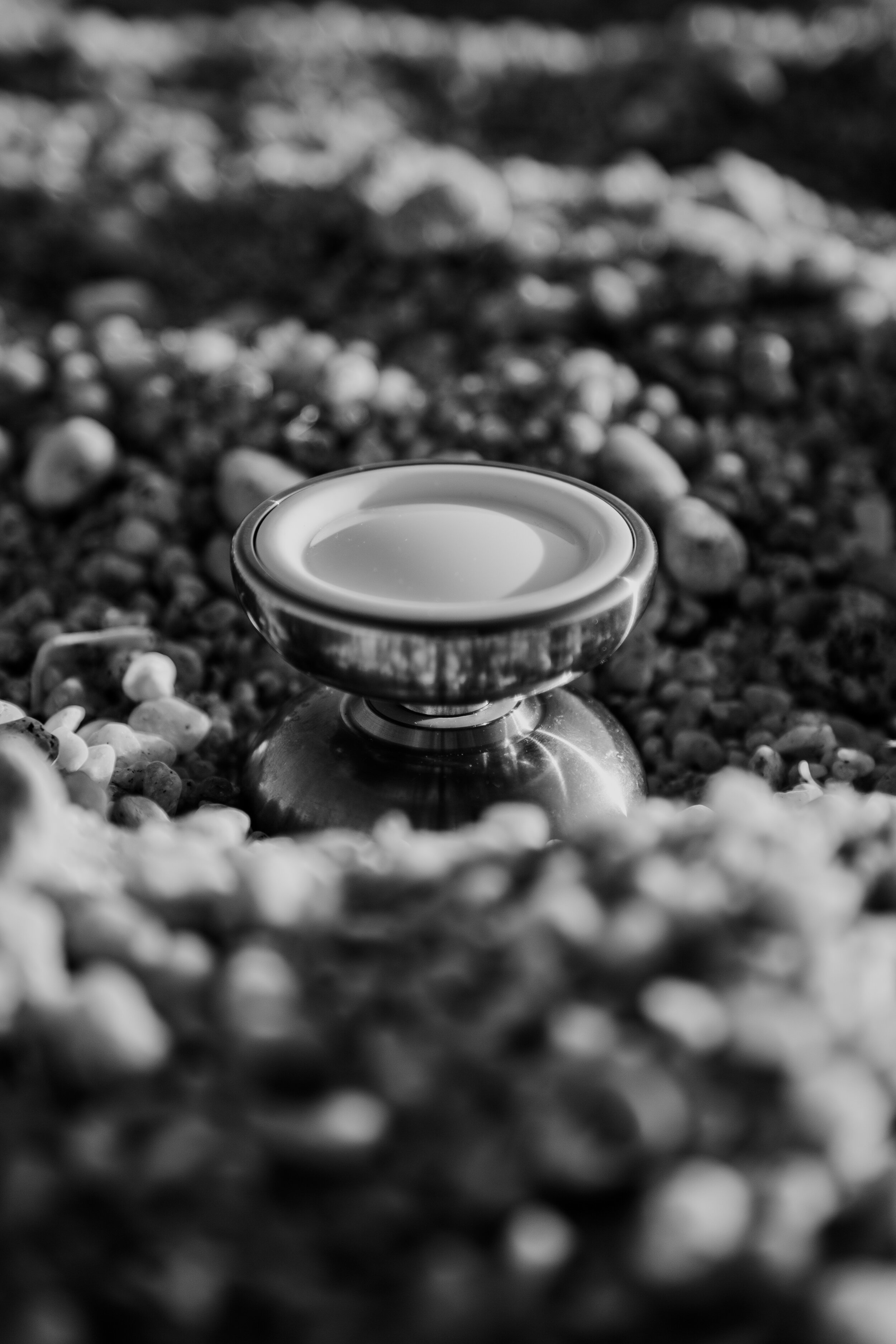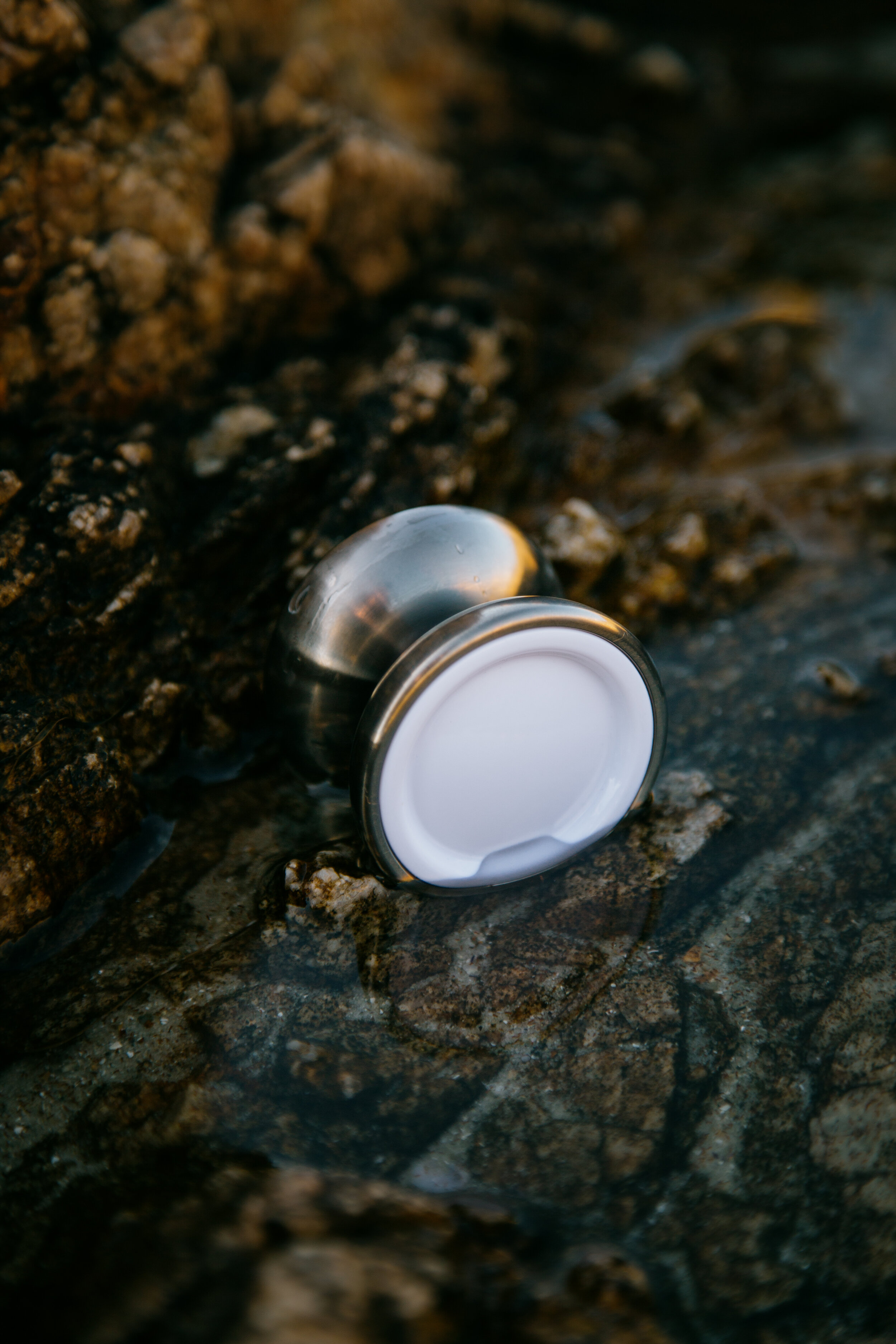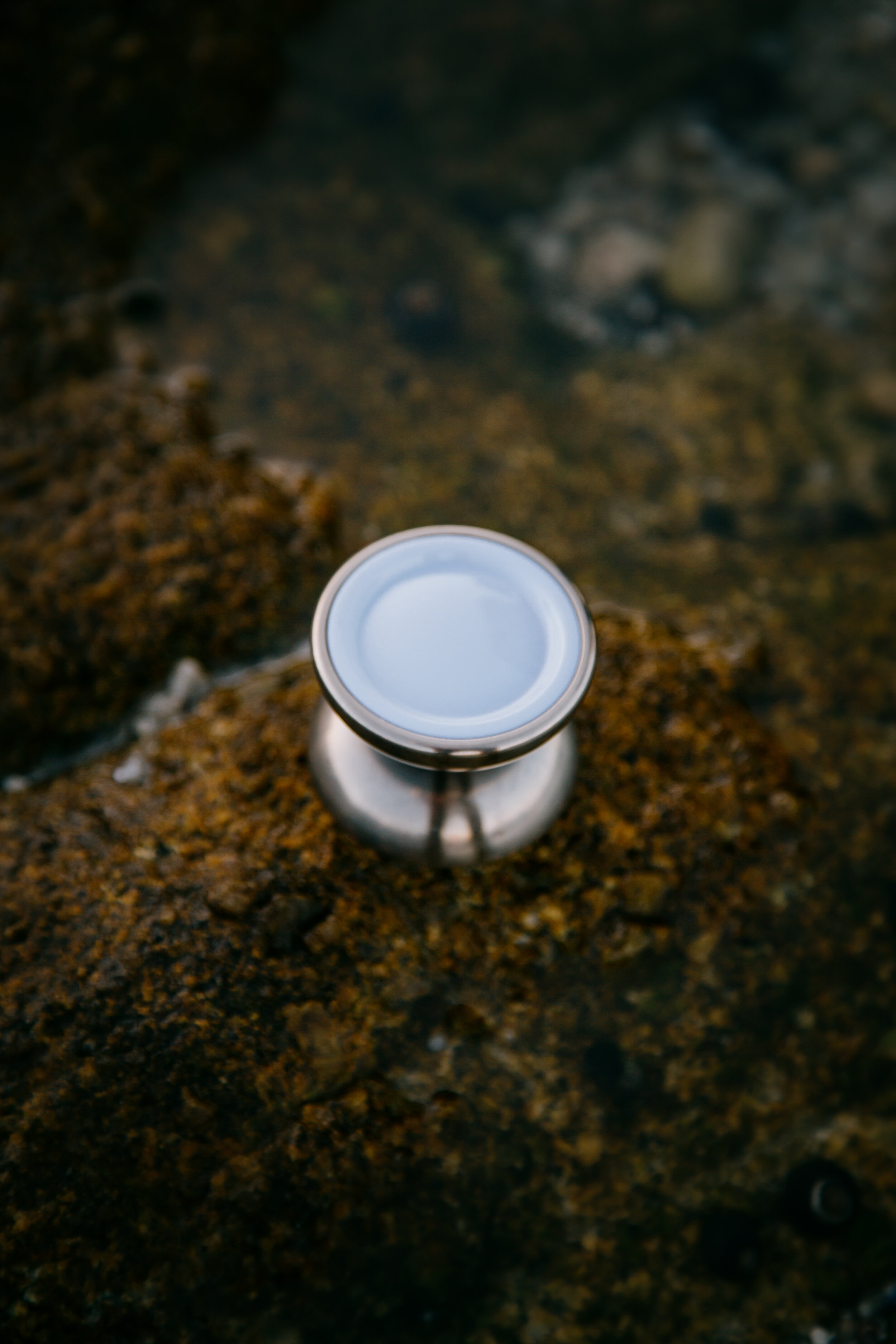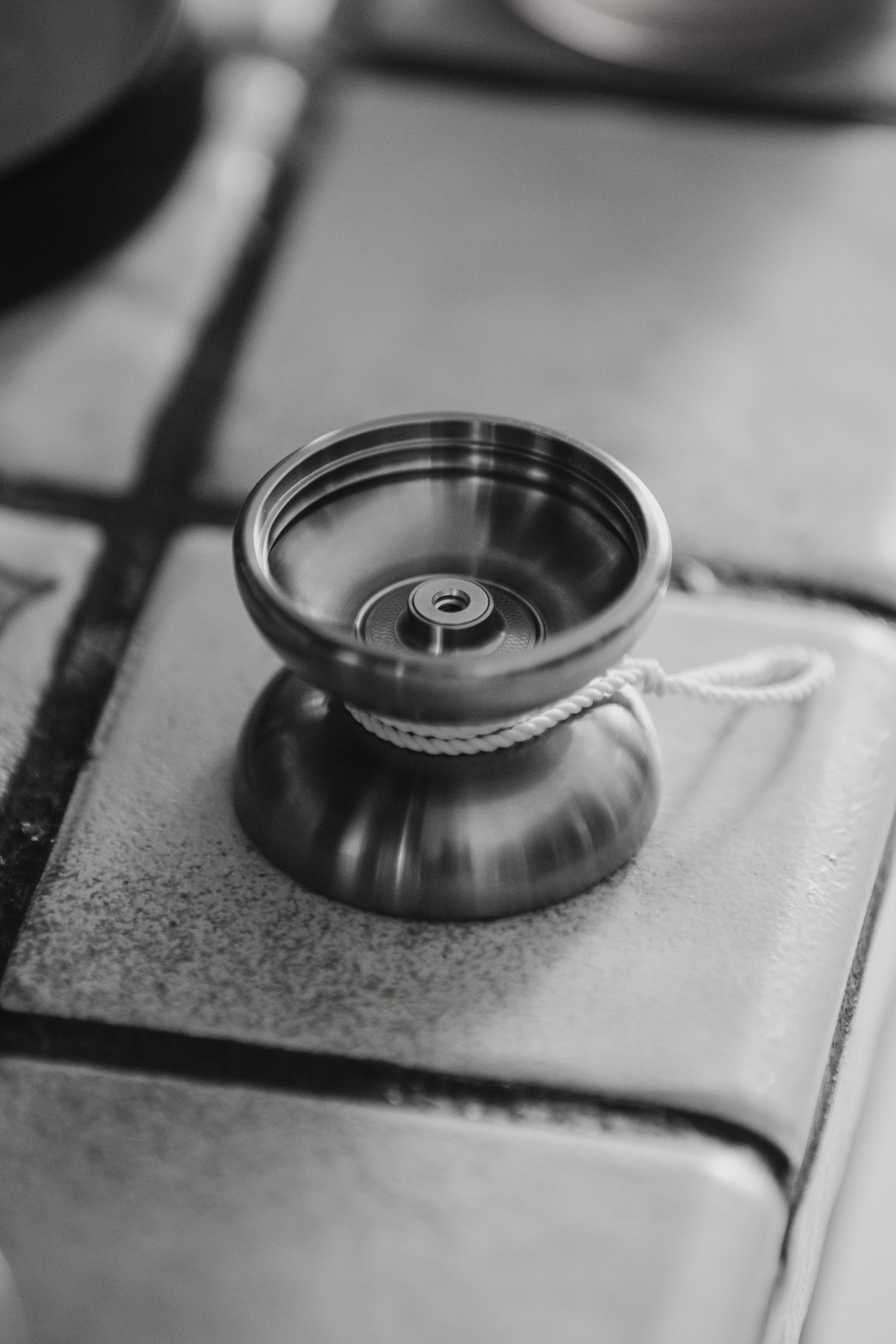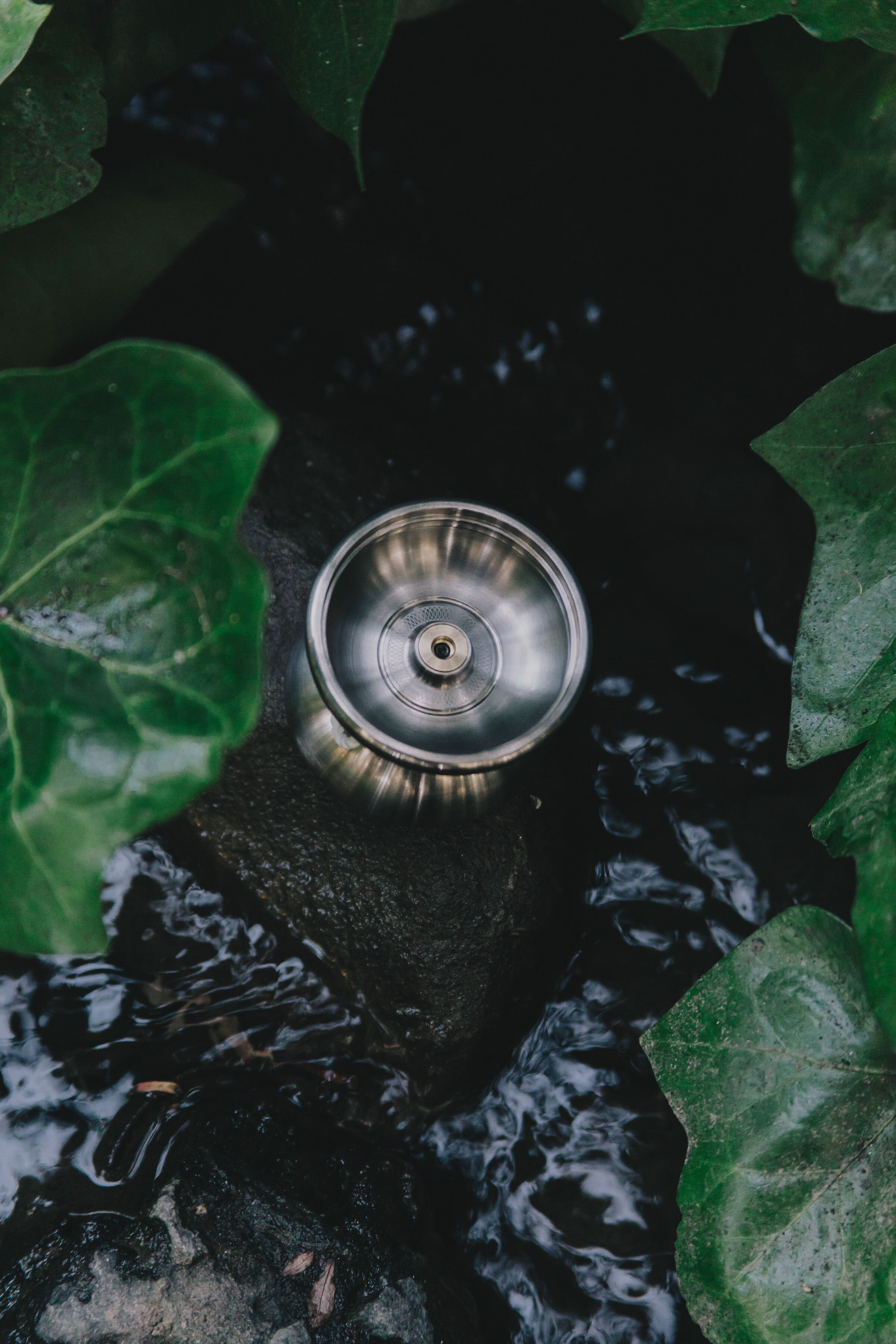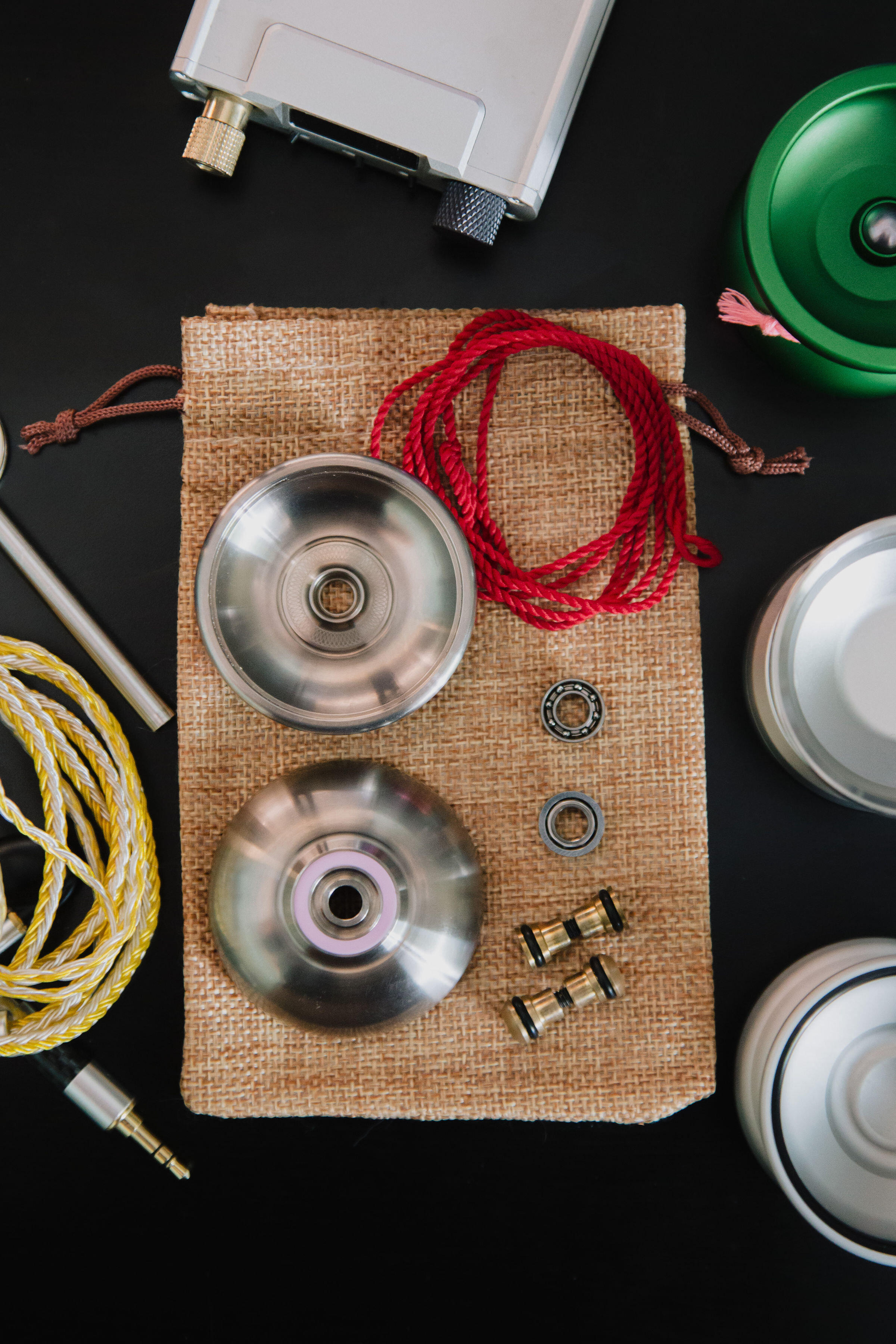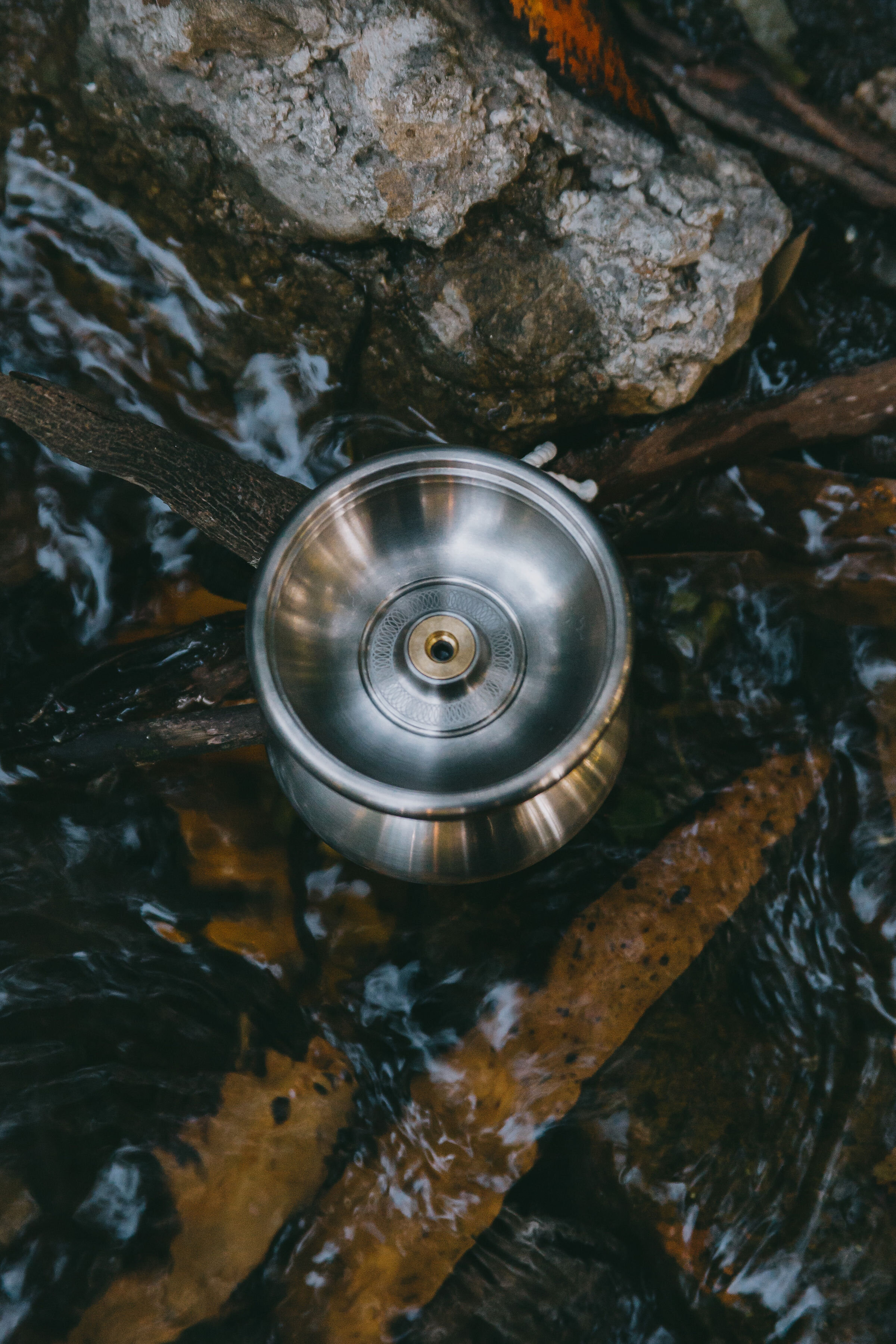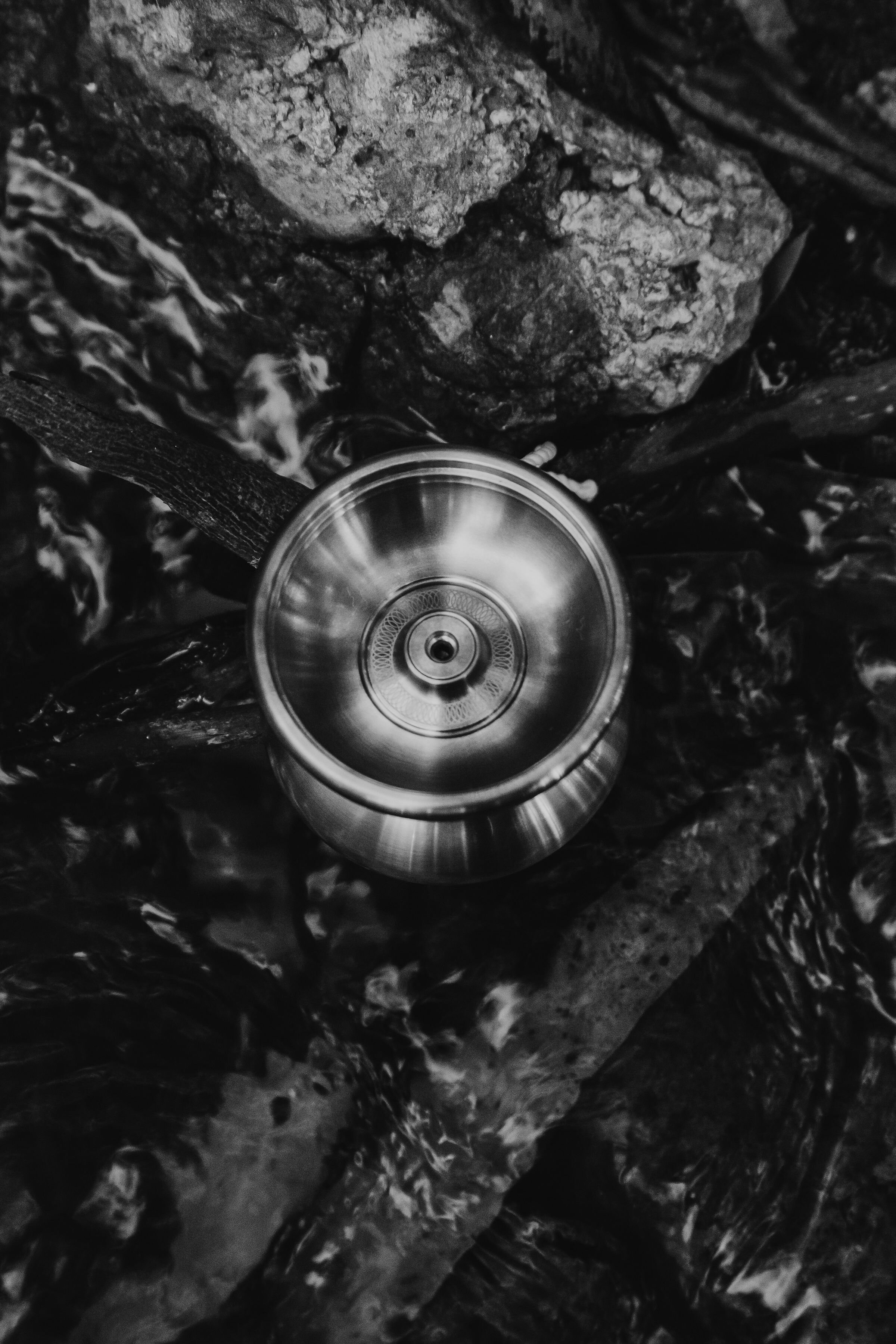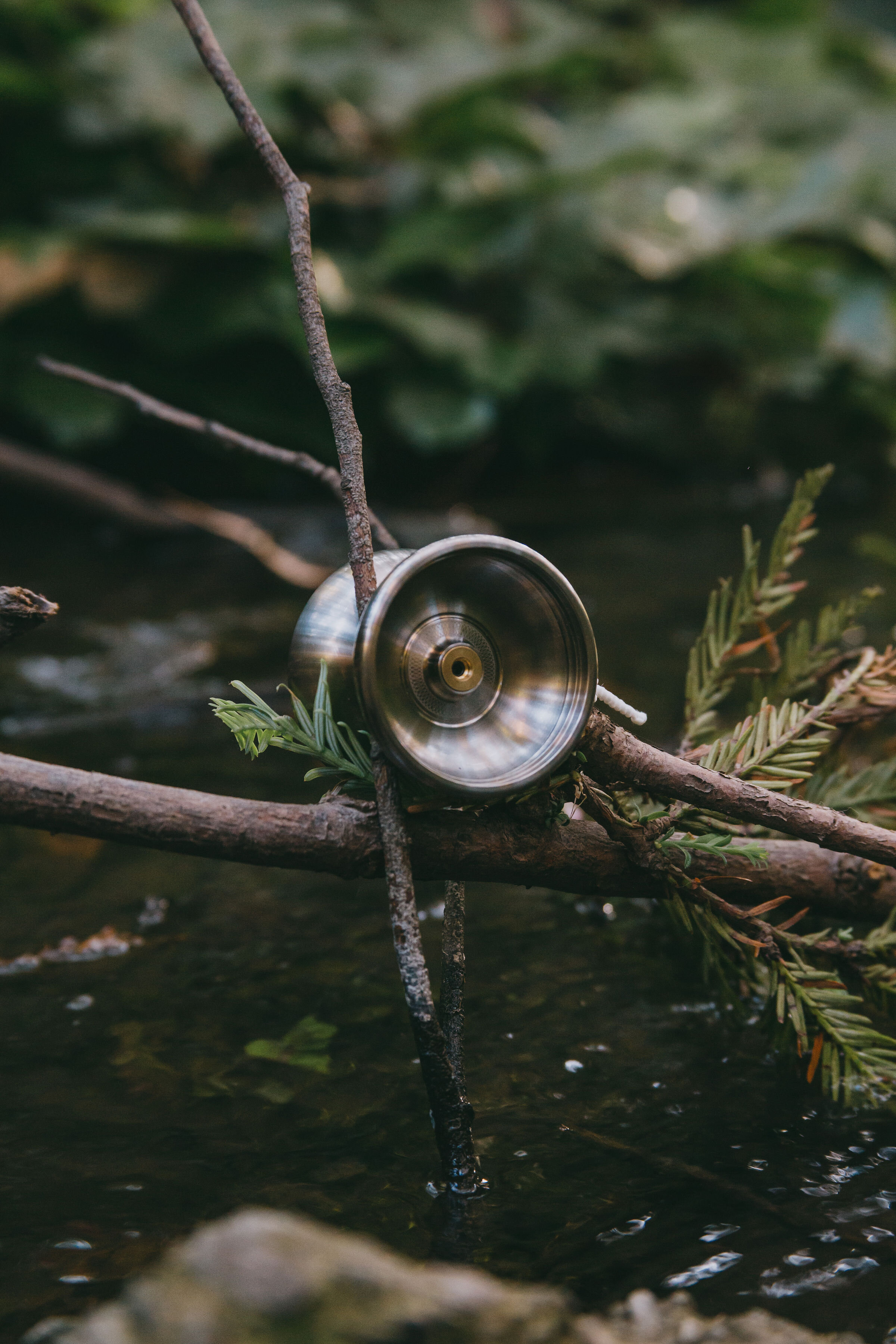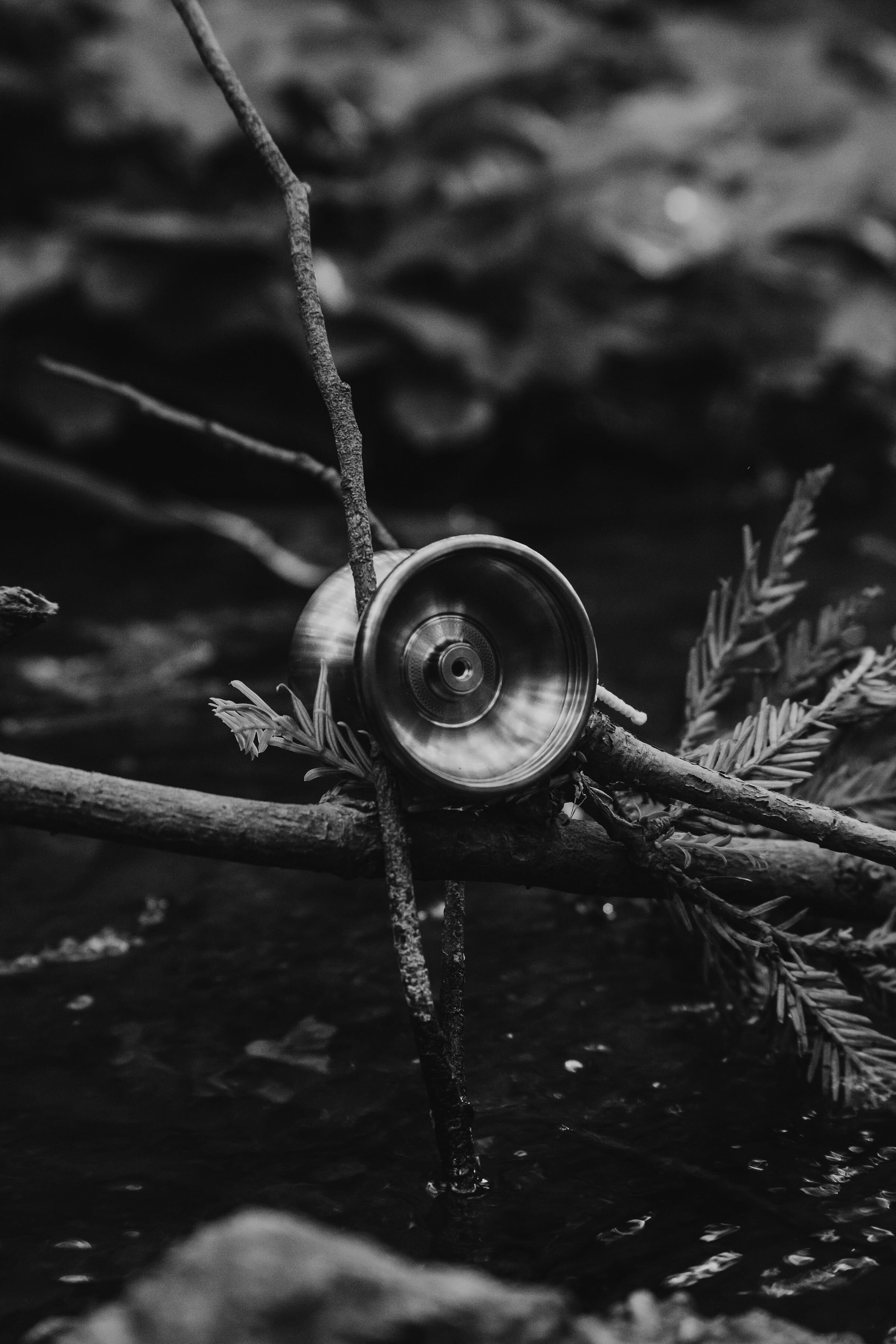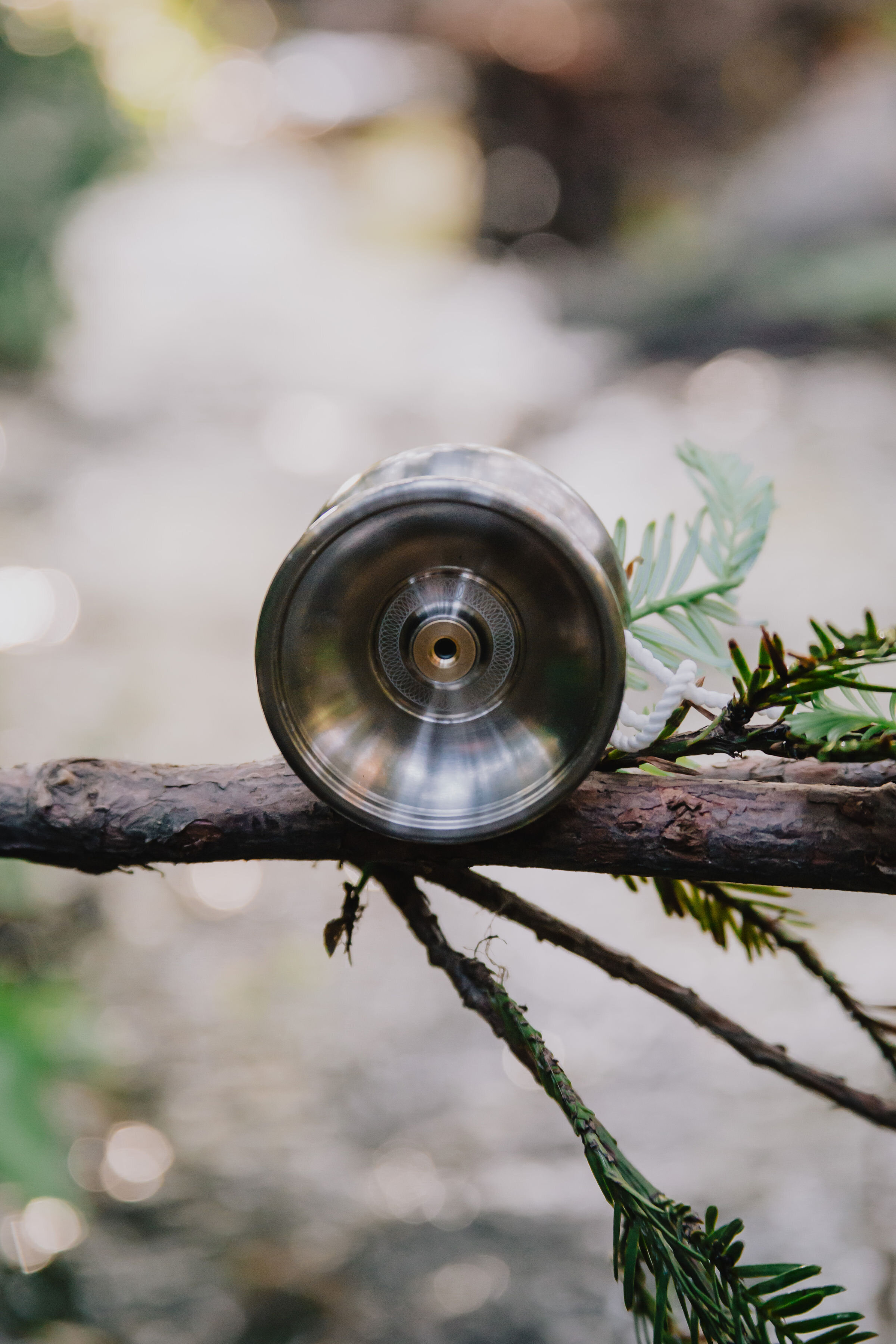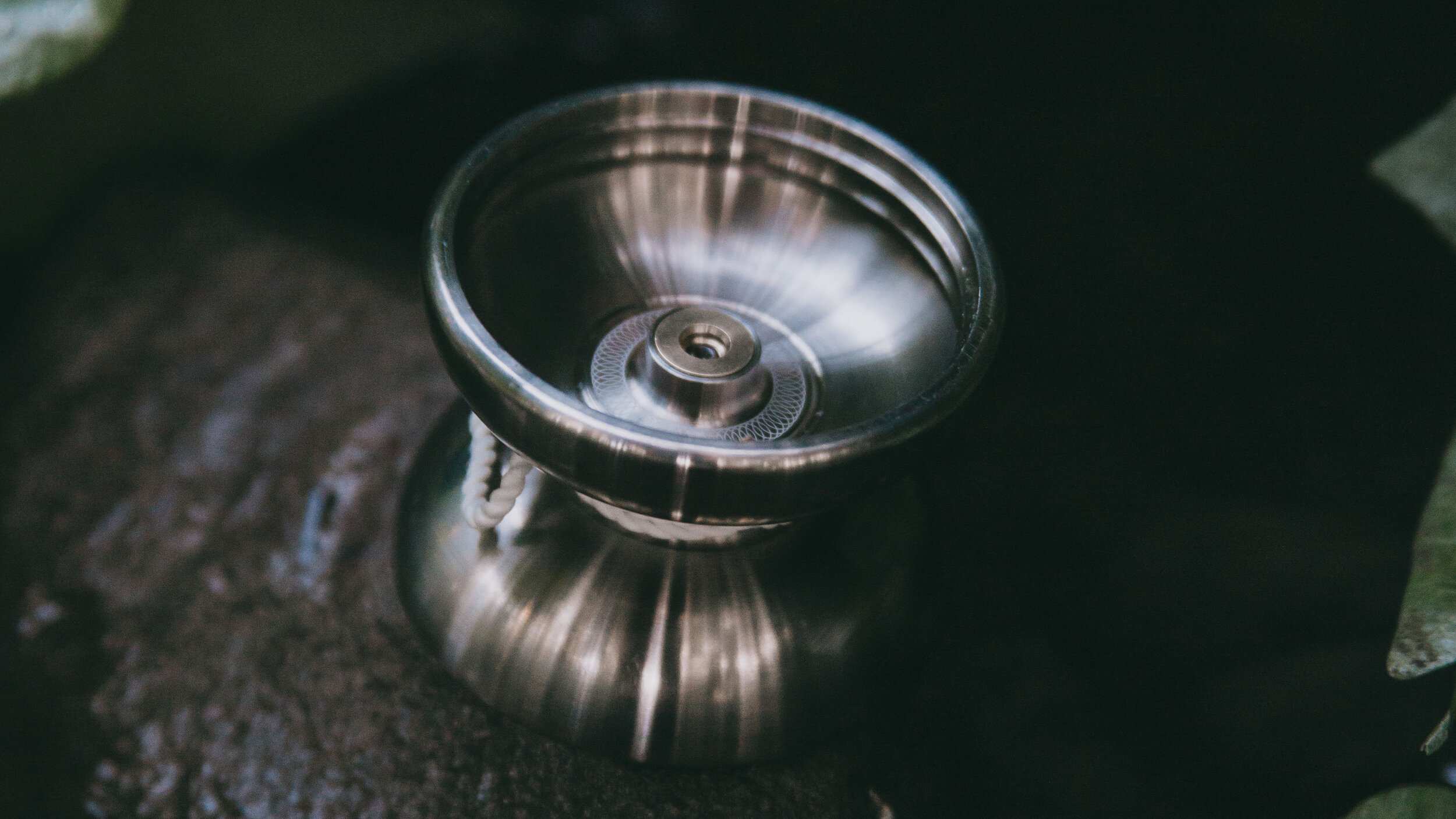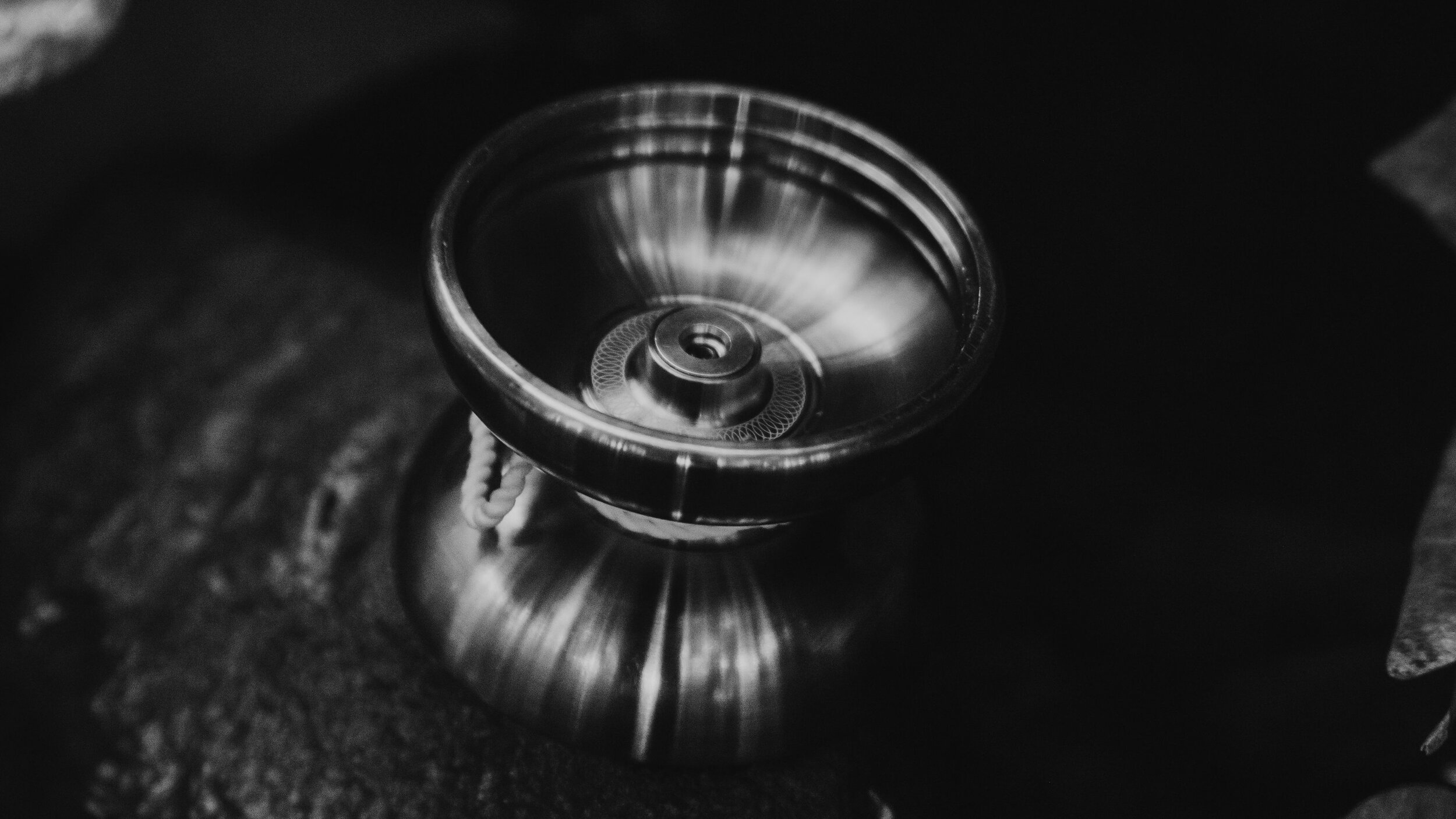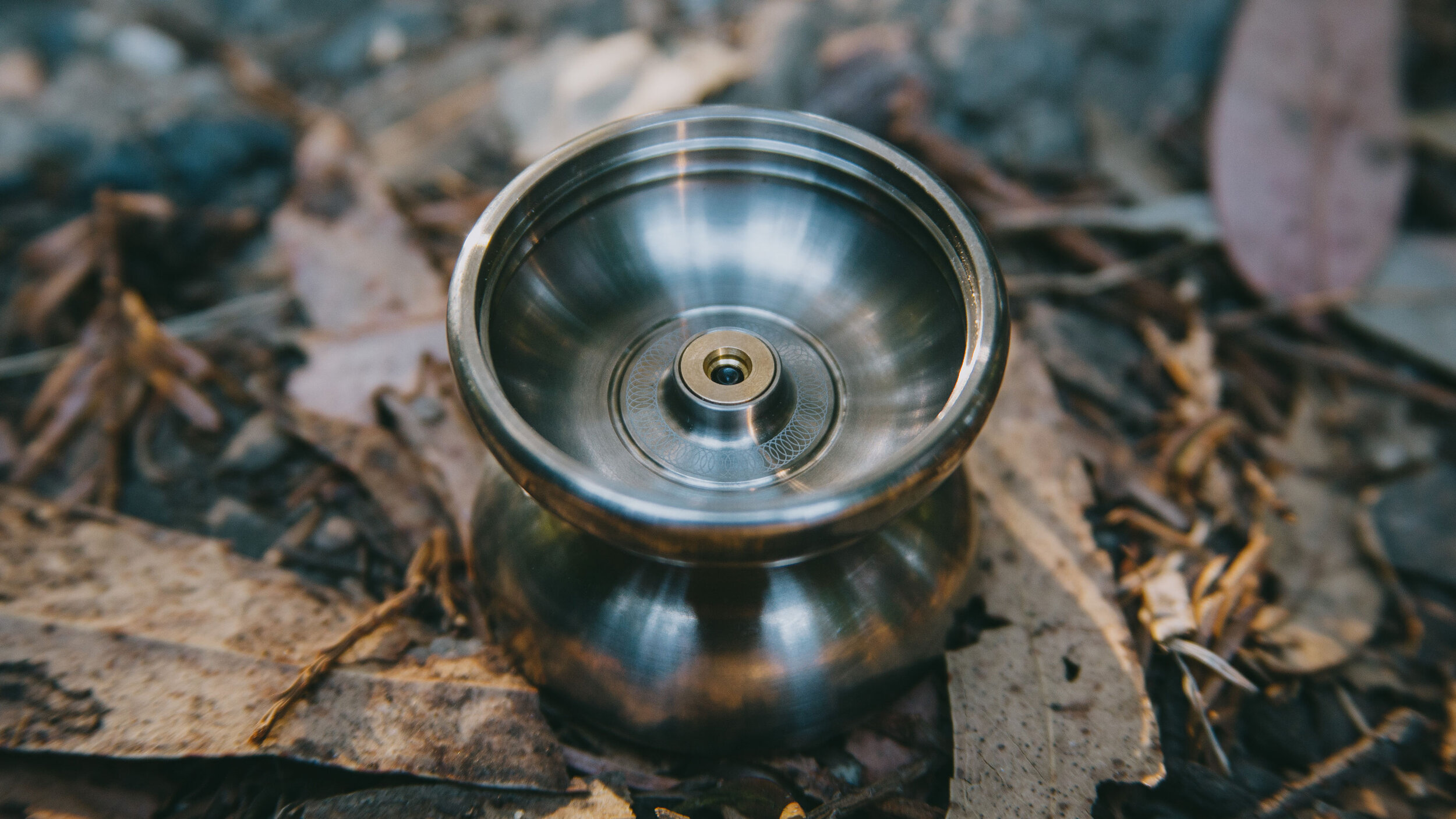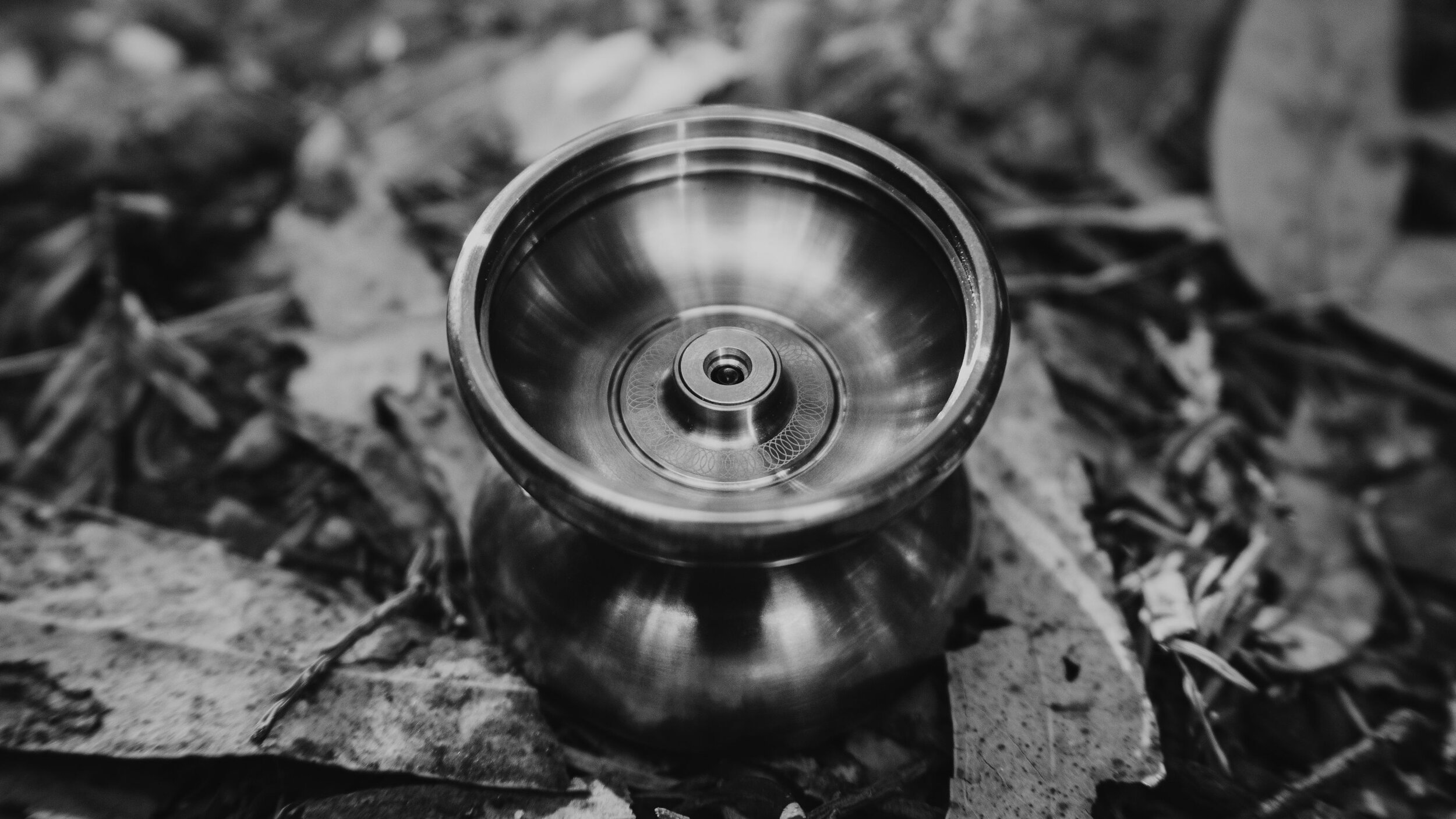RELEASE INFORMATION
Release date 28 MAY 2021
Sold direct AND VIA YOYOEXPERT
Retail 399.99 USD
RAW TITANIUM
70 MADE
VARIABLE WEIGHT, FROM 60.4G TO 76.6G, DEPENDING ON THE COMPONENTS INSTALLED
SHIPPING WEIGHT OF 63.1g WITH ONE DROP BRASS ULTRALIGHT SIDE EFFECTS
Diameter 54mm, Width 40mm, Gap 4.4mm
YOYORECREATION NSK PLATINUM DOUBLE STRAIGHT C bearing
19MM TYPE 40 LANDING PADS RESPONSE
ALL-SINGAPOREAN COLLABORATION
I met Reuben from Atmos Projects back in October 2020 to discuss an all-Singaporean collaboration over dinner at Mos Burger. In the past year, many have questioned why a majority of RSO yo-yos were collaborations when I was able to run the show on my own. The answer is simple - RSO is merely a 2-year-old company and having a second perspective is always helpful. This was even more true for Gravity.
Gravity was unlike previous RSO collaborations, where correspondences were done remotely. The prospect of linking up with a local company appealed greatly to me because both parties could meet in person to discuss the CAD design, art direction and eventually split the load of assembly, testing, and shipping.
We both agreed to do a titanium yo-yo with removable caps. My first yo-yos with removable caps (some linguists would prefer to call them “pogs”) were the Playmaxx Proyo II and the Turbo Bumble Bee. The caps at that time were mainly for aesthetic purposes. They were made of a cardboard like material which became dirty and started peeling off with play. Although it was easy to remove them due to their flexibility, they were often inevitably damaged in the process.
Another yo-yo with removal caps that I owned was the plastic Duncan Freehand. As the Freehands (and their caps) were injection molded, there was often a significant discrepancy between the dimensions of the yo-yo and the caps. It was impossible to remove the caps in some of them.
The only titanium yo-yo which caps could be installed on the market at present is the Turning Point Majiska. It is truly a gorgeous yo-yo, but the caps are not elegantly removable. People have used toothpicks to push the caps out through the axle hole, but you would be stuck in a tricky situation if the cap fit was too tight. Unscrewing the axle from one half also carries a small risk of stripping the axle or hole threads. With the caps, you’d end up with a yo-yo that weighs almost 70g. At 49800 JPY, it was priced similarly to the Doombot, the most premium RSO release to date. The Majiska has recently undergone a redesign to remove the cap groove.
There was a gap in the market for this category of yo-yos. Both Reuben and I wanted the Gravity to be more functional and offer a much greater value for the premium paid. We questioned ourselves - could we price it lower?
The Gravity’s catch zone is heavily inspired by the Atmos Projects Cloudberry, with its deep Schmoove rings.
FUNCTION OF YO-YO CAPS
Caps are mainly installed to improve the aesthetics of a yo-yo. For Gravity, we were limited by the designs and colors of Freehand Zero (FHZ) caps available on the market. Currently, FHZ caps are primarily available on the Spingear store. We ordered a batch of blank FHZ caps and felt that they were not consistent enough in their dimensions, with their widths varying between colors. This is likely attributed to the fact that they are injection molded.
The other issue with the ready-made FHZ caps is that it would give the observer an impression that you were holding a FHZ. Moreover, most of the FHZ caps had Duncan branding on them. These shortcomings, however minor, were not acceptable for an RSO release. We tried but failed to customize the caps - laser engraving caused the caps to melt, while sticking a sticker on its surface was impossible due to its convex surface. Painting on the yo-yo or cap was completely out of the equation - I’ve always felt that a custom painted yo-yo gives one an impression that the yo-yo was bought at a market. As a collector myself I would pay less for them than their non-painted counterparts, since they are different from the rest of the yo-yos from the batch and that the paint will not age well. Although we are including a pair of blank FHZ caps in every Gravity package (meticulously reworked by Reuben to fit the Gravity cap grooves well), we went one step further.
The only solution was to custom CNC machine the caps, which solves the tolerance problem and allows for customization. The custom cap has a flat surface, almost resembling the lid of a Pringles container, allowing a sticker to be pasted. We made the caps out of polycarbonate for an important reason which I will elaborate further.
With our custom CNC machined caps, with a pasted sticker.
With our custom CNC machined caps, without a pasted sticker.
With FHZ caps.
WEIGHT VARIATION
The Gravity has weight range of 60.4 to 74.2g depending on the components installed. The weights of the included individual components are as follows:
Yo-yo body, 55.6g
RSO 19mm Type 40 Landing Pads and Yoyorecreation NSK platinum double straight C Bearing, 2.3g
Brass ultralight One Drop Side Effects (SE), 5.2g
Pair of weight rings, 3.6g
Pair of custom caps, 5.6g
Pair of FHZ caps, 5.4g
Gravity ships without the weight rings or caps installed, weighing 63.1g - this is my personal favourite setup, because the yo-yo retains its titanium ring when it spins.
My other favourite setup would be to install aluminium ultralight SE and the custom caps. The yo-yo weighs about 66.0g and you can literally feel a sense of nostalgia of throwing a Freehand with every trick. In addition, the typical ring of titanium is dampened by the caps, giving the yo-yo a hollow hum like the Freehand when it spins.
The 60.4g minimum weight is achieved by installing aluminum ultralight SE (2.5g, not included) without the included weight rings or caps. You can play the Gravity at its maximum weight of 76.6g by installing brass CODE1 SE (9.5g, not included) with the included weight rings and custom caps.
Different components of the Gravity which can change the yo-yo’s weight.
My experience with the titanium Silver Bullet was extremely helpful in terms of sourcing for the rubber rings and designing the groove which fit them perfectly. This allowed for additional weight variation. The weight rings sit just slightly underneath the caps. The Gravity uses the same weight rings as the titanium Silver Bullet.
The second (often neglected) function of yo-yo caps is for weight variation. This was the most complex aspect of the Gravity design. We set out with the following objectives:
The yo-yo should have a playable weight with and without the caps.
The caps have to be durable and should not be damaged during the removal process.
It should be easy to remove the caps.
The first objective was the hardest to achieve. We had our sights set on at least a mid-sized yo-yo. Trivia: when designing a yo-yo with cap grooves, there has to be enough material at the rims to hold the caps in place. The bigger the yo-yo diameter, the more weight would have to be put at the rims, since the diameter of the cap remains the same. This renders the yo-yo too heavy to play even without the extra components installed. We eventually settled on a diameter of 54mm.
The caps had to be lightweight so that we could stay within a playable weight range. Prototype caps were made in both delrin and polycarbonate. I preferred the opaque appearance of delrin, but it was too soft to be machined to a thin slab. We eventually settled on polycarbonate, which is more rigid and has a translucent appearance. You can faintly see the included brass SE through the cap. The cap is paper-thin at 1mm, as shown in the picture below, which allows for a sub-3g weight.
Polycarbonate cap specifications.
The second objective was somewhat easier to achieve. I had already made two sizable batches of SE yo-yos at this point and had gained valuable experience (read the YWETi SE Edition page if you want to know more). The SE system not only allows for weight variation but also enables easy removal of the caps. I am thankful I was able to secure a large batch of brass ultralight SE via David from One Drop for Gravity.
CAP REMOVAL SYSTEM
We had initially thought we could do away with a cap removal tool and use everyday objects, such as screwdrivers, to remove the caps. After receiving the prototypes, we found out that we often fumbled during the removal process. It was challenging to push the SE out vertically using a screwdriver (see image on left below) - the SE often tilts, making it difficult to remove the cap. There was also a small risk of the SE dropping into the cup during the removal process (see centre image below) - pushing the cap out directly with the screwdriver in this scenario often damaged the caps.
Using a screw driver to remove the SE (left), the SE dropping into the cup (center) and using the included SE tool (right). Yo-yo pictured is not the Gravity.
A cap removal tool was machined to overcome the above problems (see image on the right above). The tool fits the SE hole snugly, enabling the SE to be pushed out vertically to pop the cap out. The tool also has screw threads that match those of the SE, allowing the entire system to move as a unit, preventing displacement of the SE. We think we found a more elegant way to remove the Gravity caps. The tool is made out of stainless steel.
INTERPLANETARY TRAVEL
I have taken a keen interest in space exploration since I was in college and would have been an astronaut if it was legally possible to do so. My interest is manifested in the branding for RSO SPACESHIP, and most recently, Gravity.
Both Reuben and I thought Gravity was the aptest name for this project, simply because the yo-yo could be customized to play with a comprehensive weight range, akin to playing the yo-yo on different planets with varying gravitational forces. Want to play on the moon? Install the aluminum ultralights. Want to play on the sun? Throw in all the components.
On the art by ATILA, inspired by the Apollo 11 mission, both Reuben and I are throwing the Gravity on the moon. A few Hachikos, RSO’s mascots, are collecting scientific data. Earth is in the background.
WHAT’S IN THE BOX
A PAIR OF CUSTOM CNC MACHINED TRANSLUCENT POLYCARBONATE CAPS WITH STICKERS (NOT PASTED)
A PAIR OF DUNCAN FREEHAND ZERO CAPS
A PAIR OF RUBBER WEIGHT RINGS
CAP REMOVAL TOOL
Certificate of AUTHENTICITY
ASTRONAUT MISSION EMBROIDERED PATCH
A PAIR OF MAROON 19MM TYPE 40 RSO LANDING PADS
RED STRING
PHOTOGRAPHY BY ATMOS PROJECTS
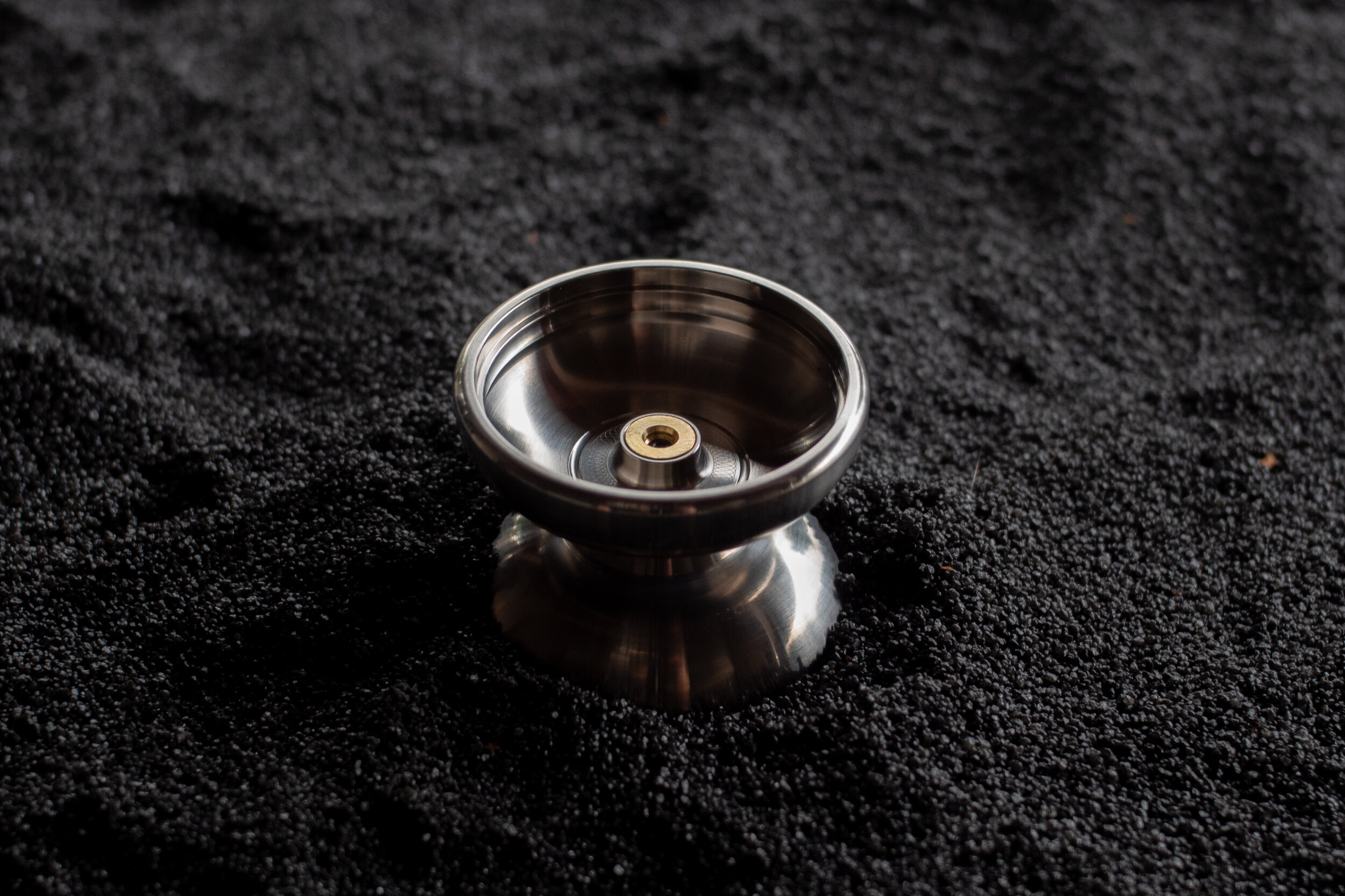

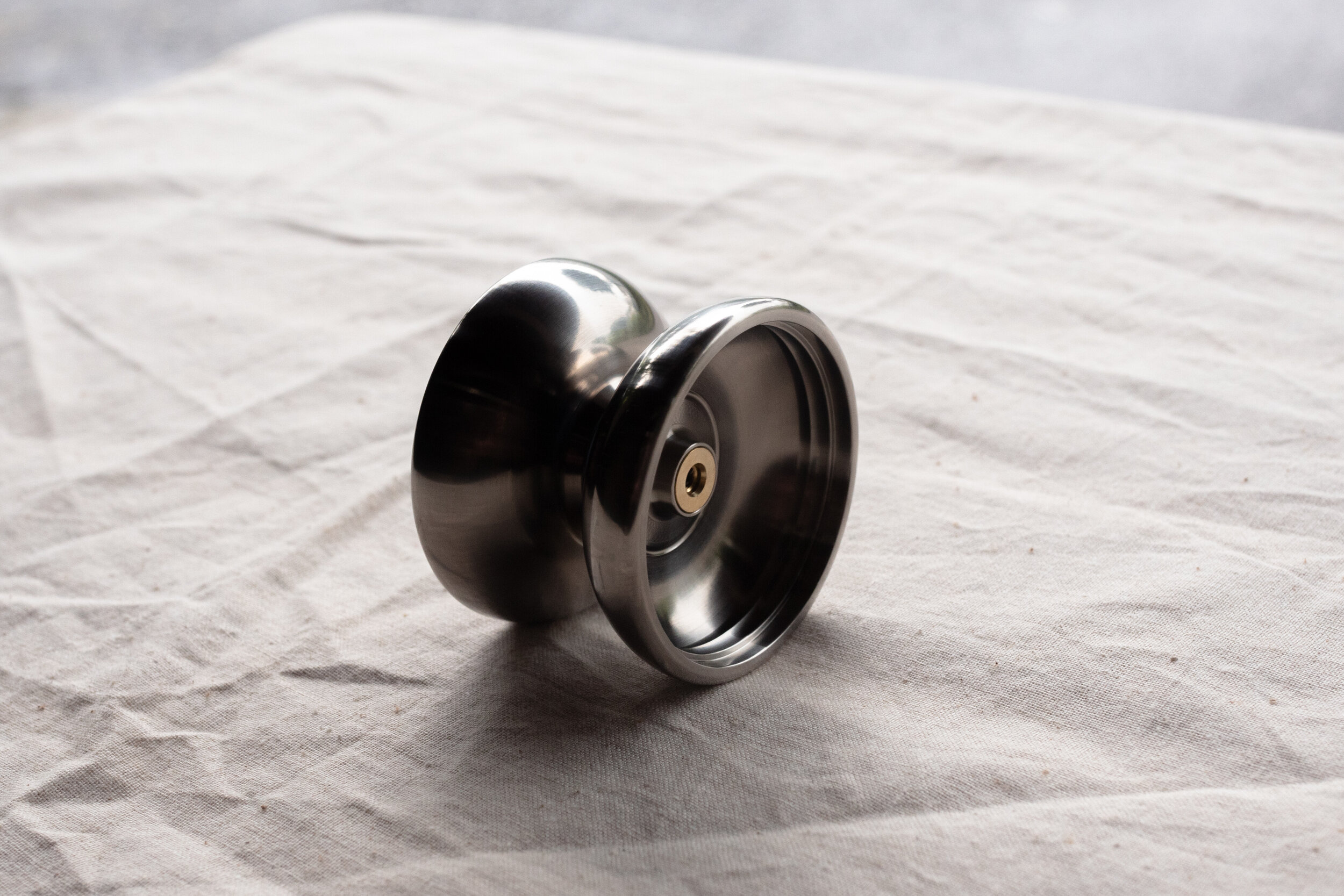
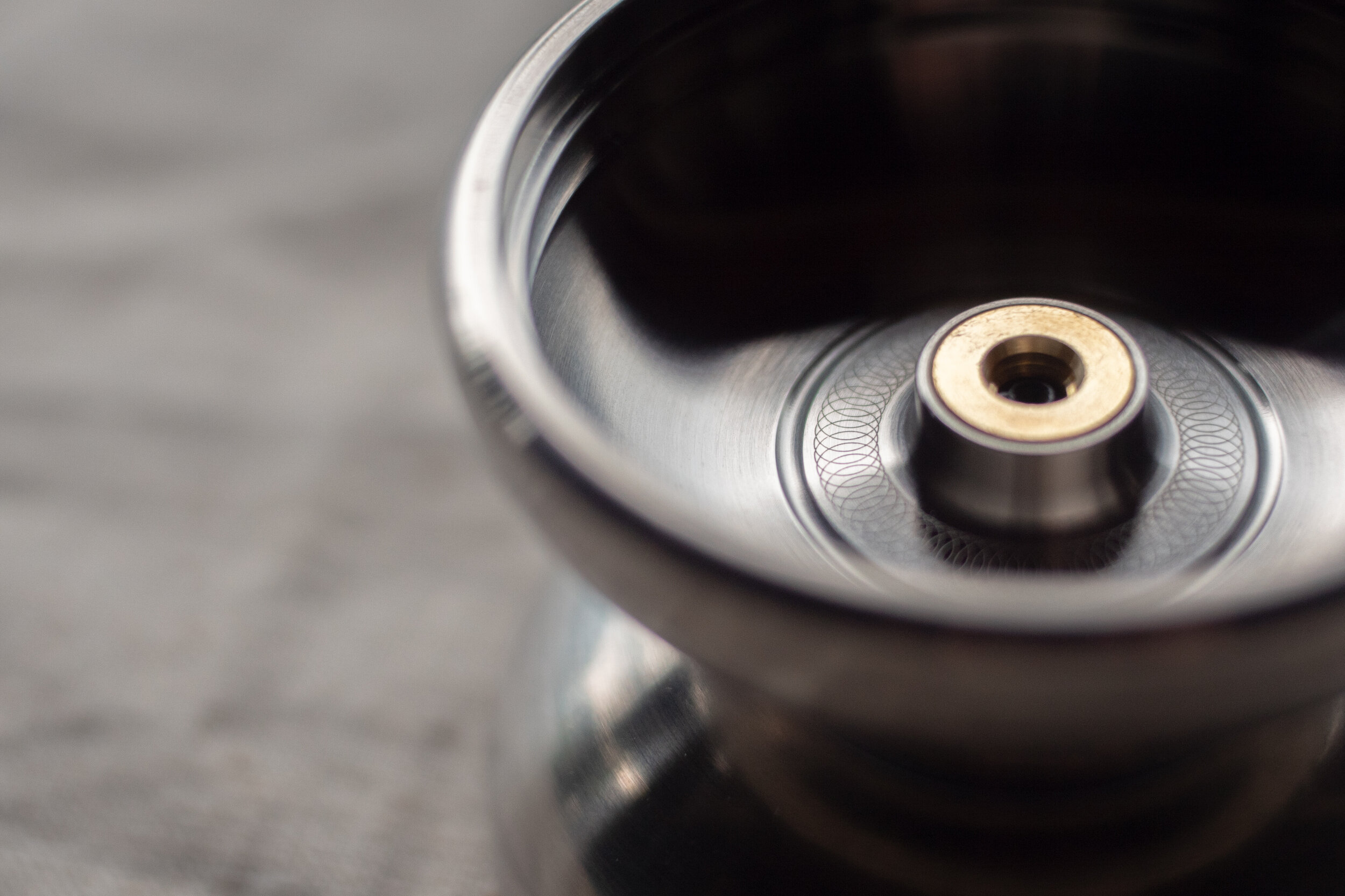
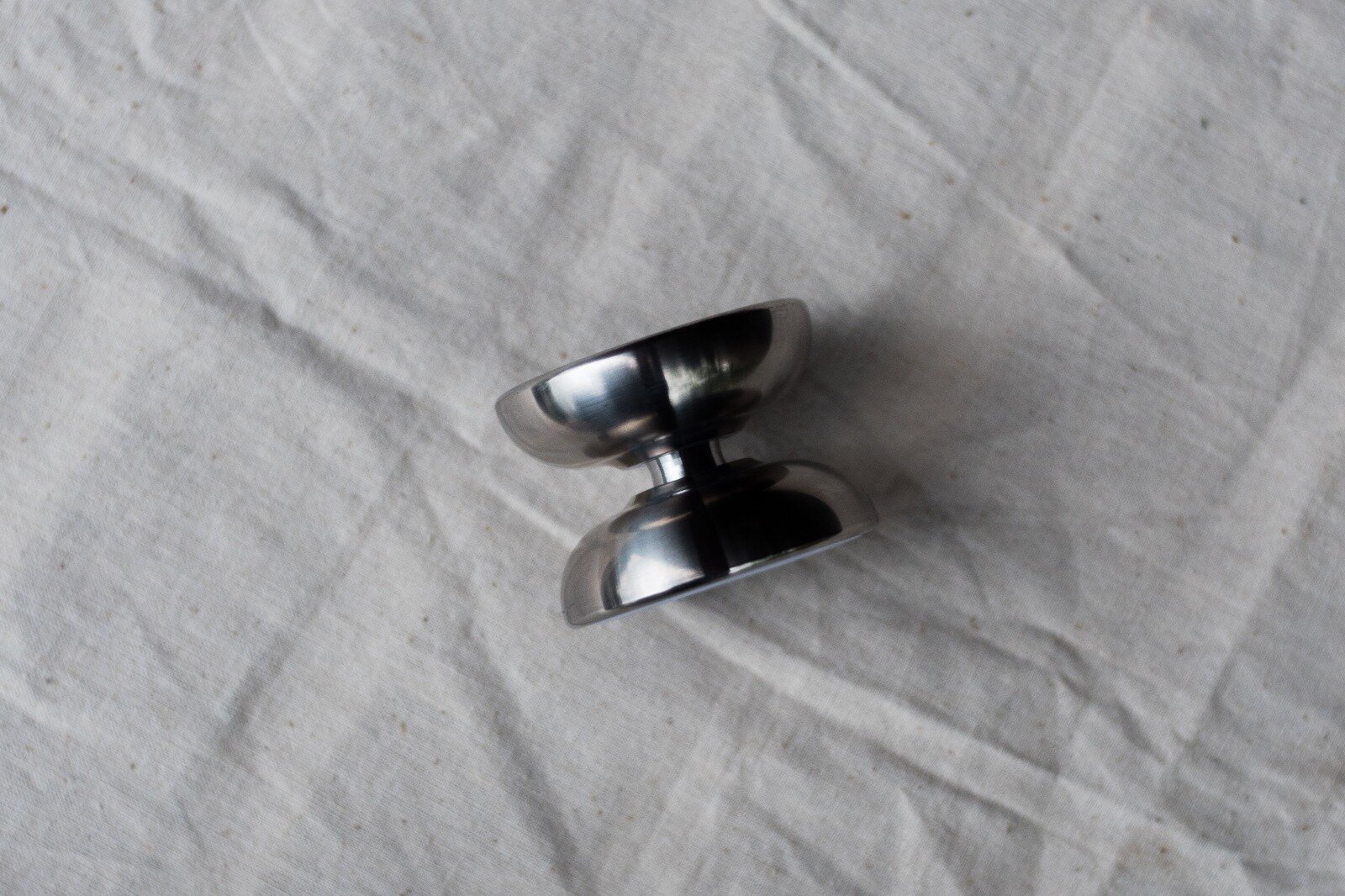
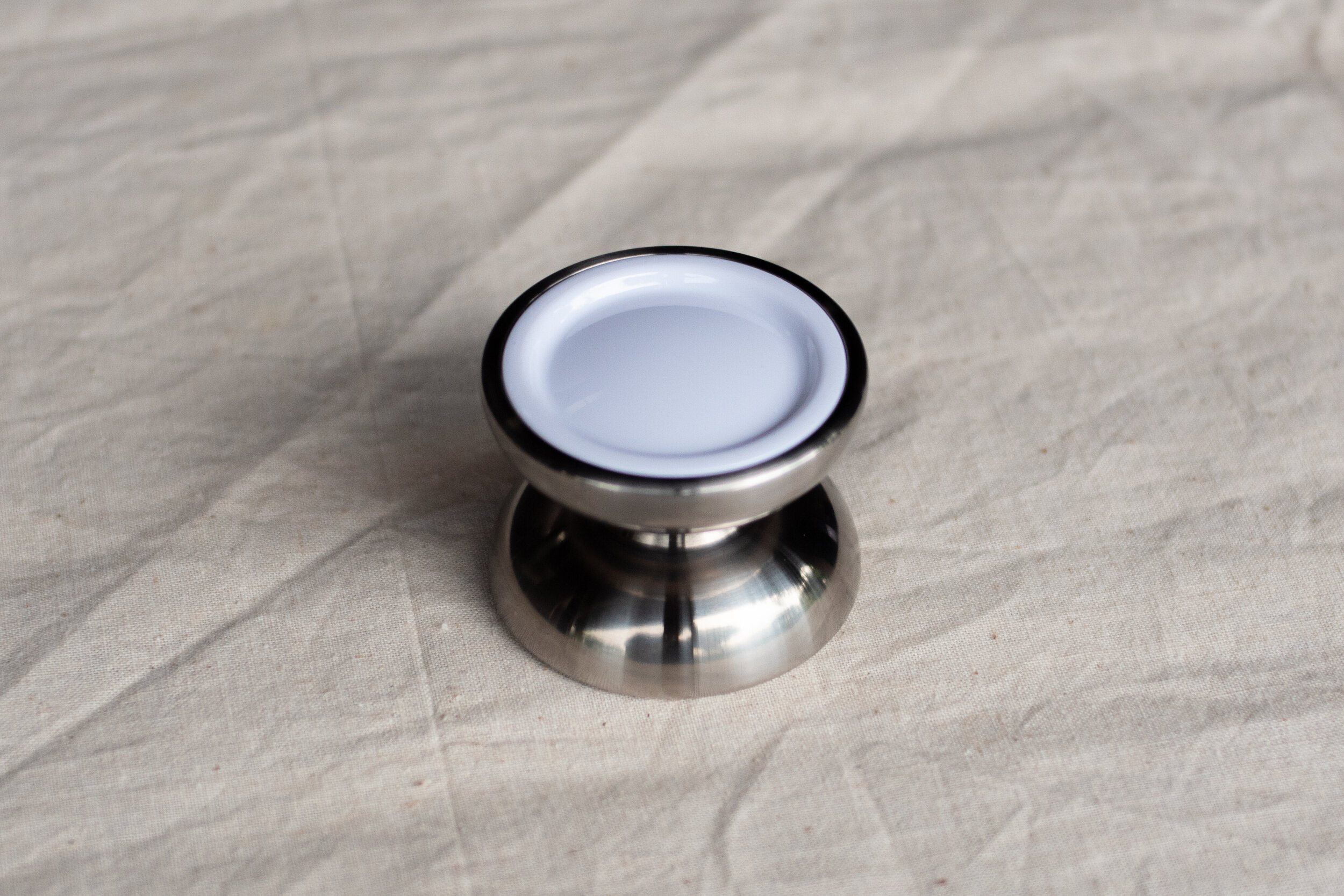
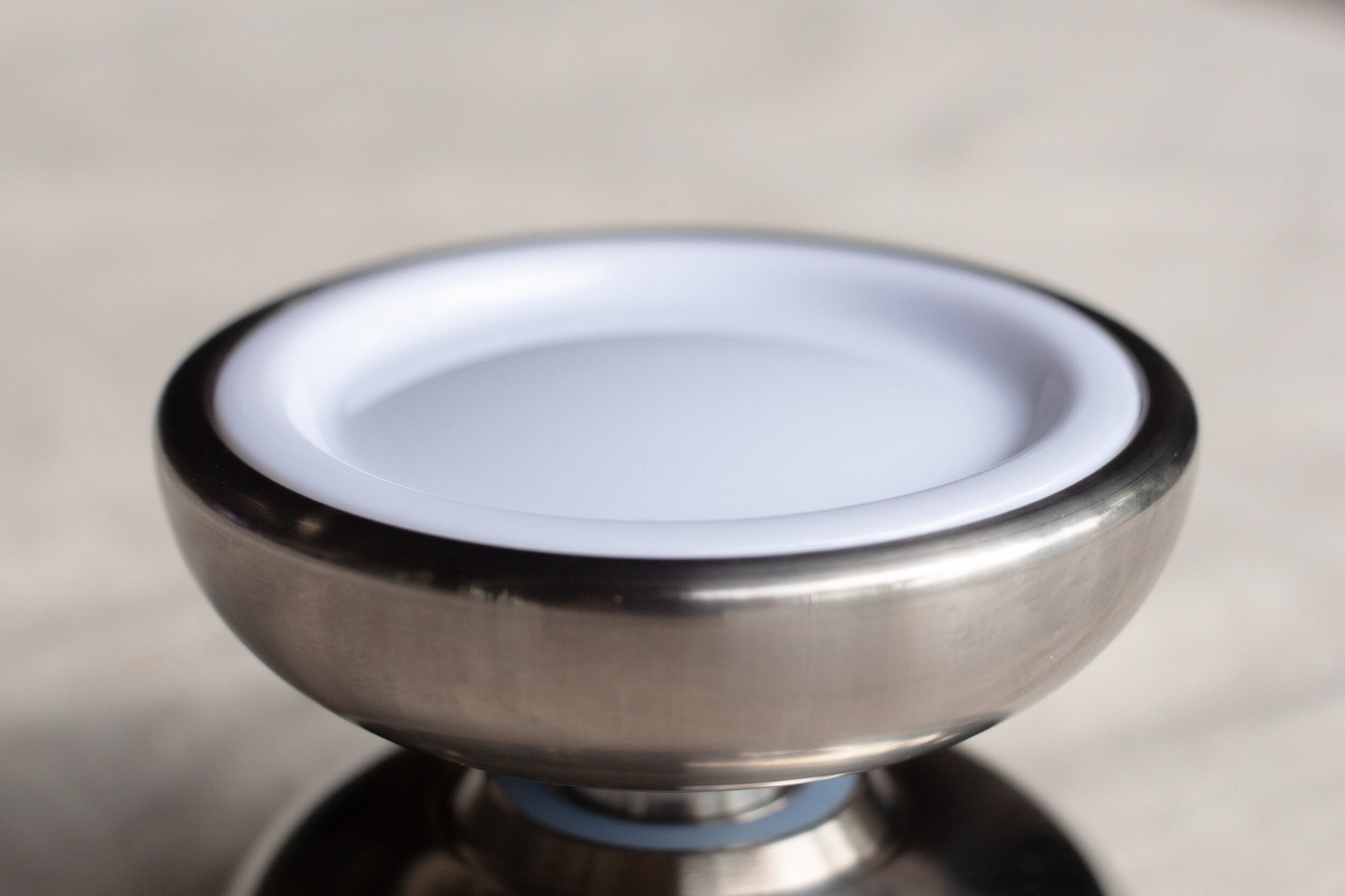
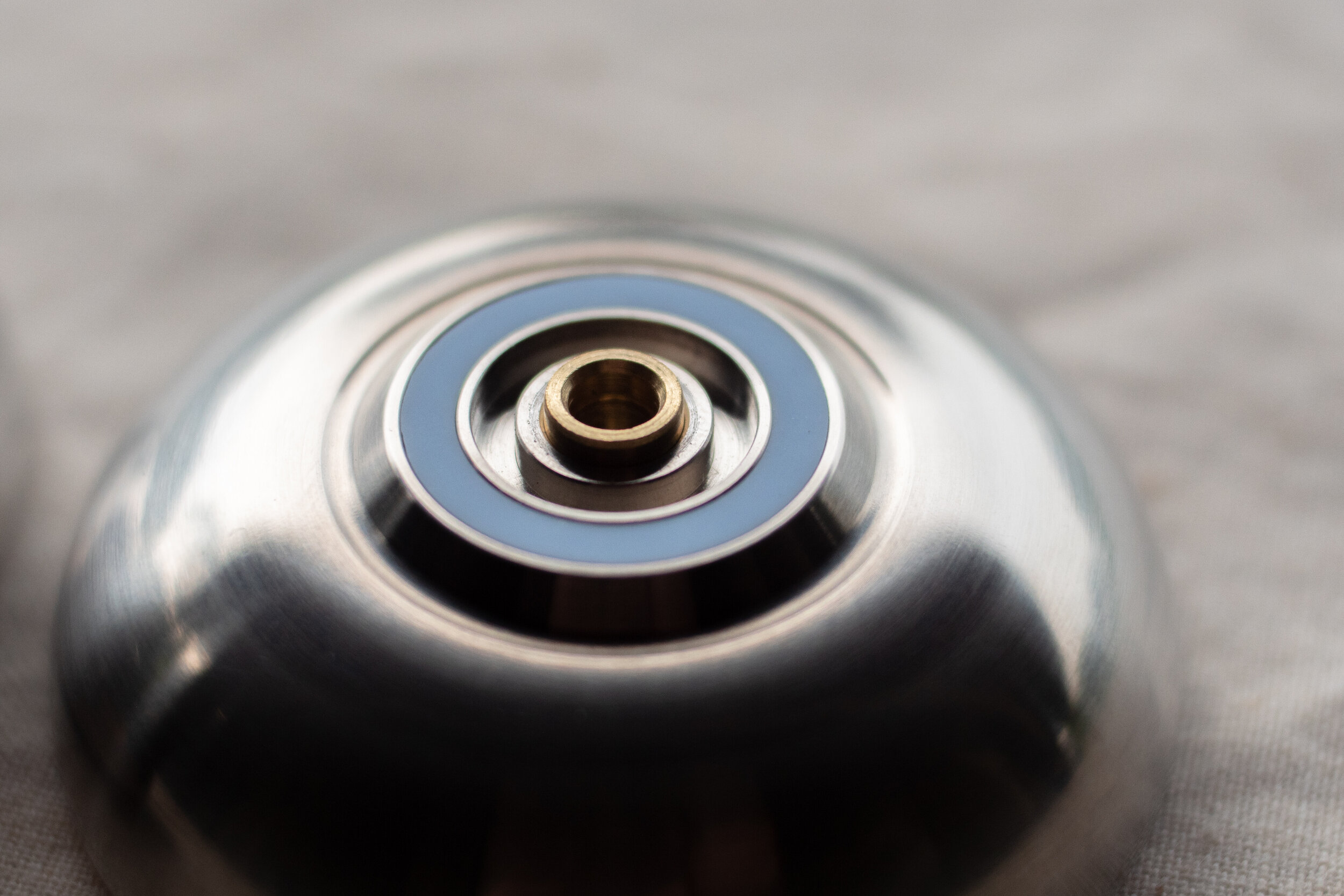
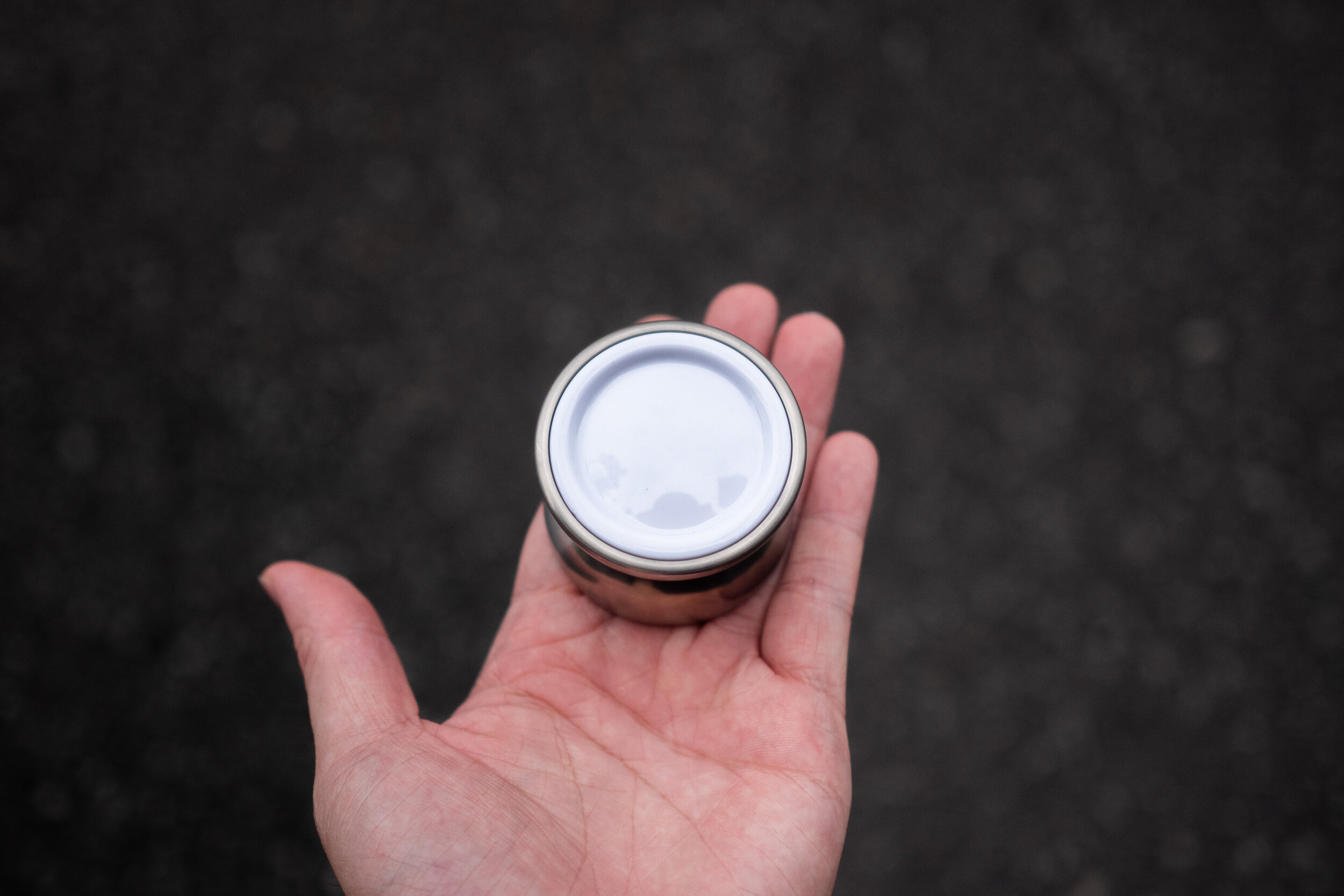
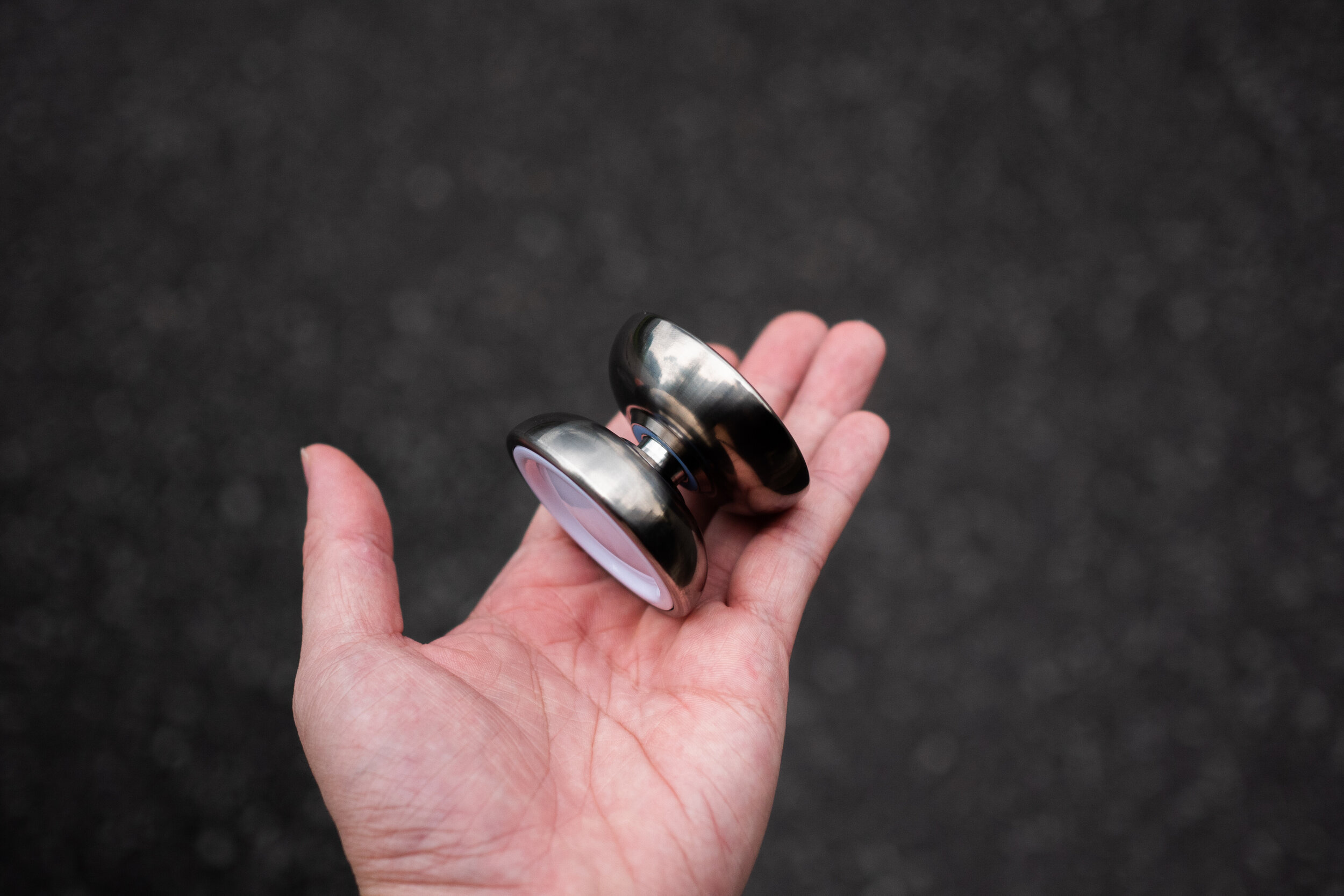
PHOTOGRAPHY BY EDITION YO-YO
